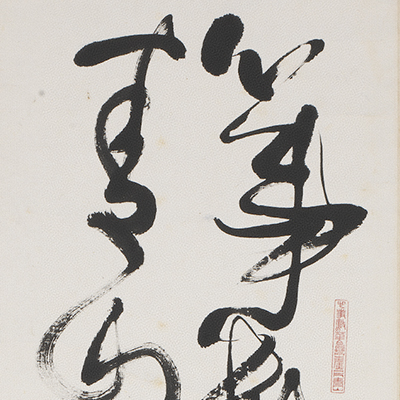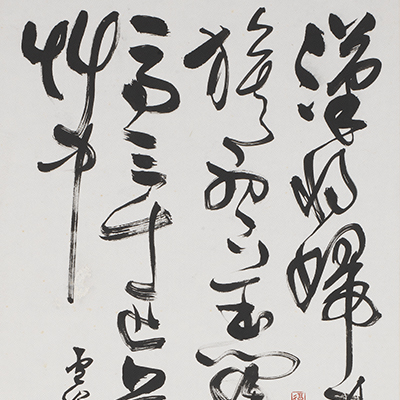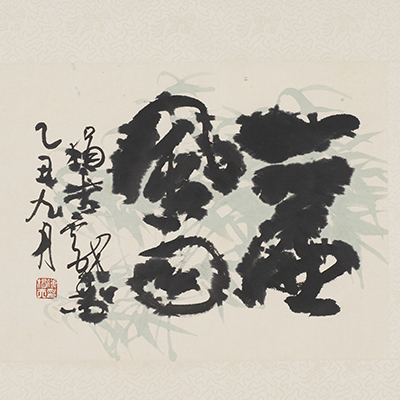After coming to Taiwan, Fu Chuan-fu began to devote considerable effort to "major cursive" script calligraphy, being especially fond of a single-stroke style known as "cursive script unbroken." His early study followed the styles of such Tang dynasty masters as Ouyang Xun, Liu Gongquan, and Yan Zhenqing as Fu sought to develop a square and upright manner. However, upon coming across "Modelbooks of the Three Rarities Hall," he started studying the styles of other masters, being quite partial to the running script of Wen Zhengming (1470-1559), the traces of whose calligraphy would remain in Fu's writing for the rest of his life. Fu Chuan-fu also dabbled in Northern Stele calligraphy, achieving its solemn and majestic manner.
After arriving in Taiwan, he dedicated himself to major cursive script, using unbridled lines to apparently divert his attention from the uncertainties of that time. Previously, he had purchased a handscroll reproduction of Wang Duo's (1592-1652) "Poetry in Cursive Script" printed in Japan and studied it extensively, realizing the nuances of modulation and cadence in cursive brushwork. As a result, Lo Chia-lun (1897-1969) would comment that Fu Chuan-fu's semi-cursive script brushwork was also painterly in quality: "Viewing his characters is like viewing his paintings." Fu had the same idea in mind, for he incorporated a painterly approach to the arrangement of his strokes and lines, achieving a balance between hard and soft as well as fluid and unbridled. One of his later works, the small scroll "A Screen of Wind and Rain," features soaking wet ink for not only a painterly effect but also a literal rendering of the title, appearing as if caught in a rainstorm for a unique approach of his own.
A Screen of Wind and Rain
- Fu Chuan-fu (1910-2007), Republican period, 1985
- Hanging scroll, ink on paper, 33×42.8 cm
In this piece, Fu Chuan-fu first painted the bamboo leaves and then did the calligraphy before the ink had completely dried. The strokes follow the spreading washes of the leaf forms, appearing as if actually done after a rainstorm. The meaning of the characters, the calligraphy, and the painting seamlessly fuse to make for a unique work.



